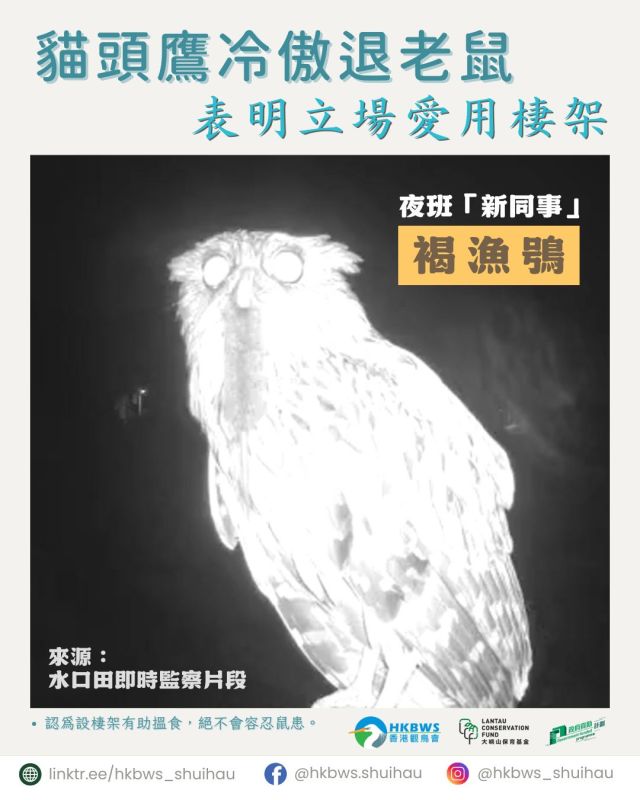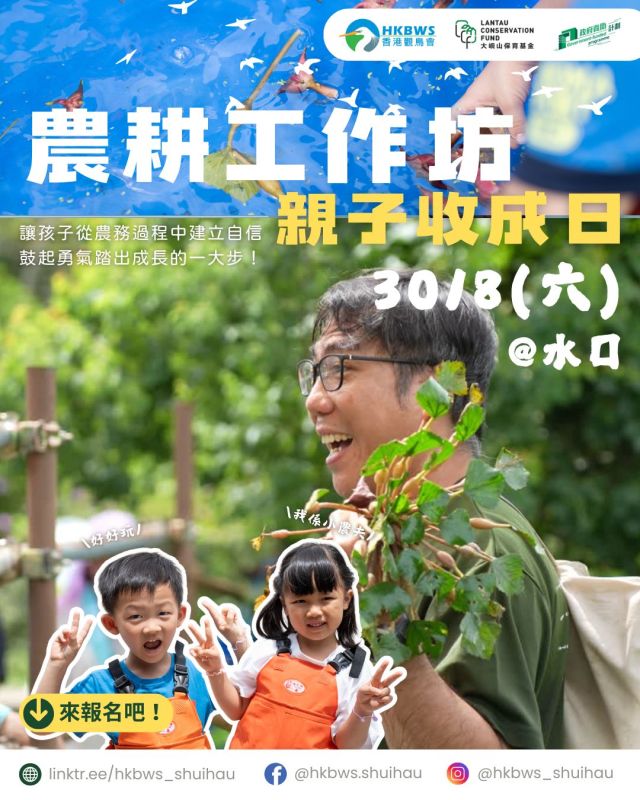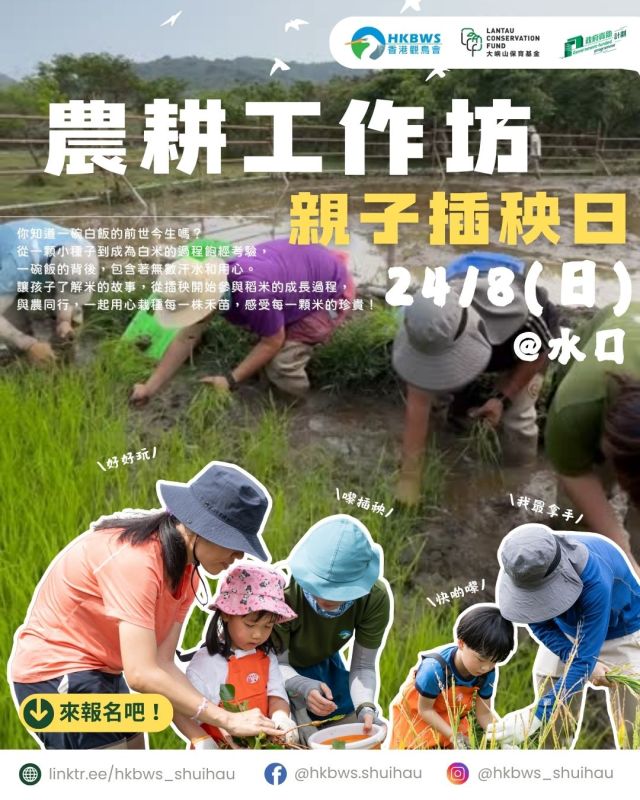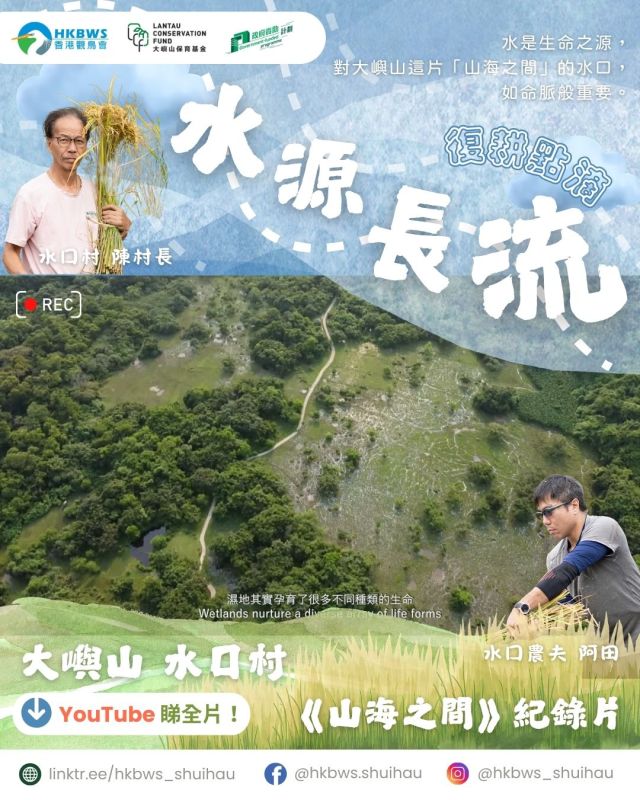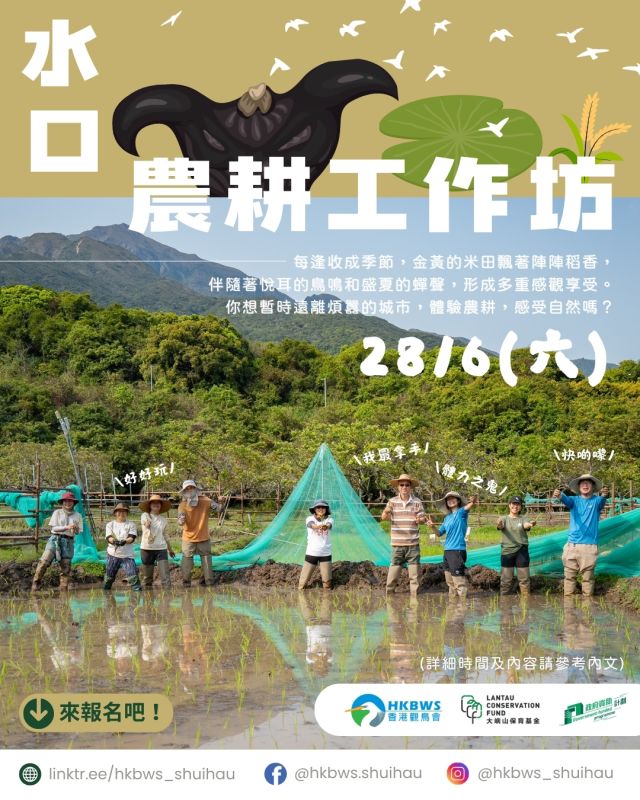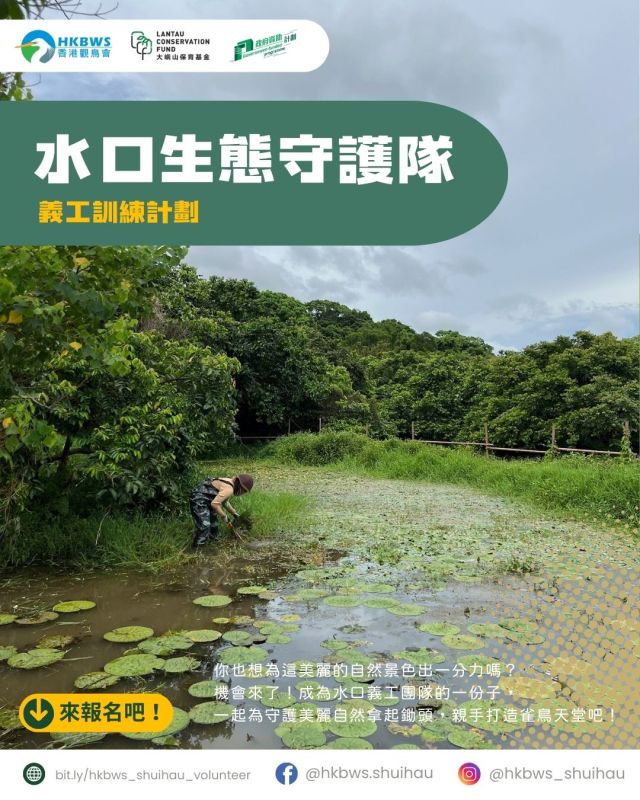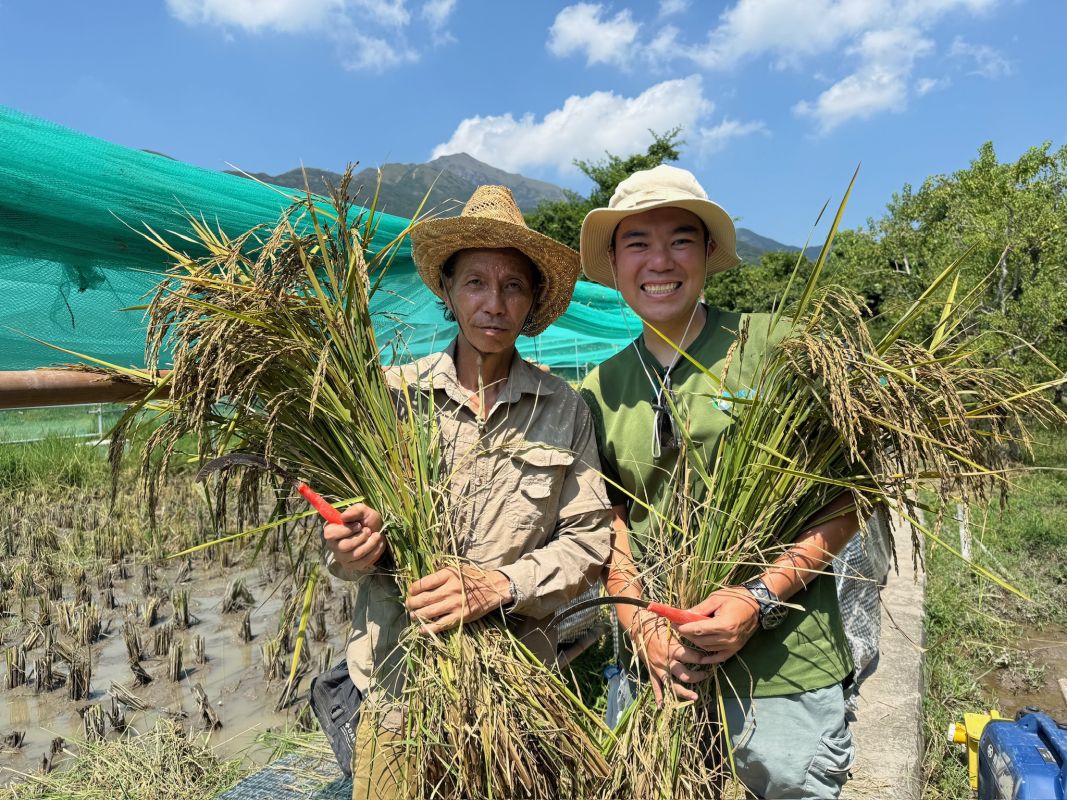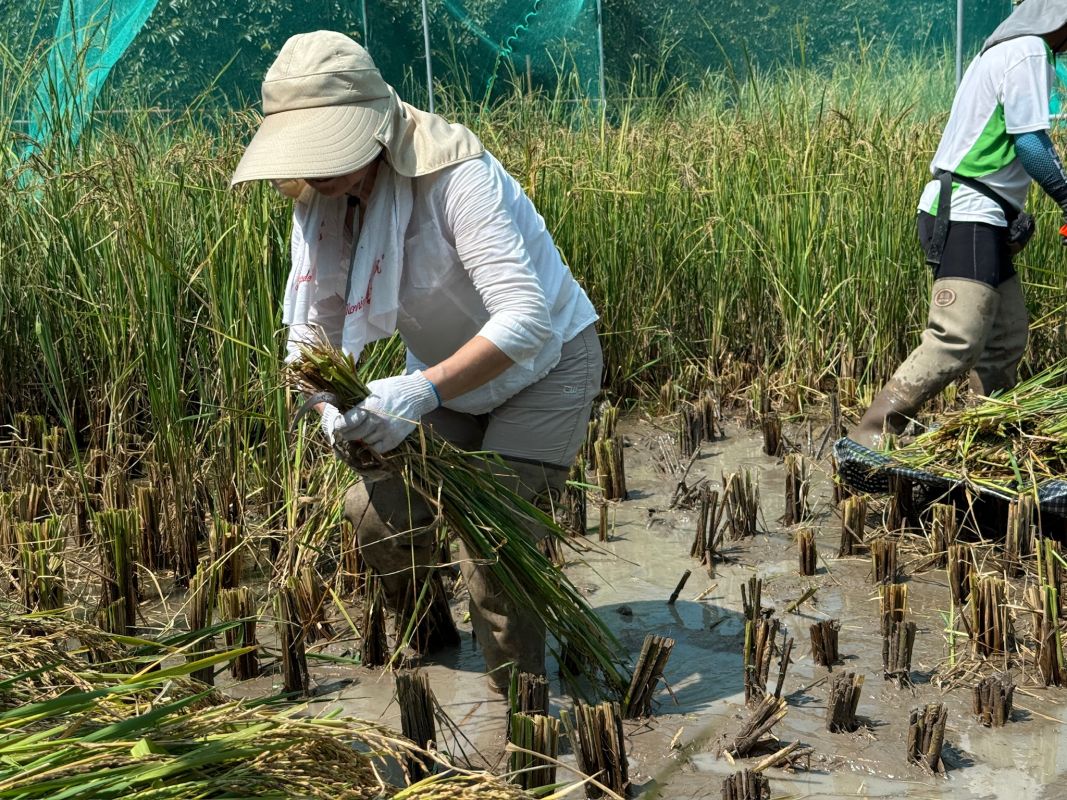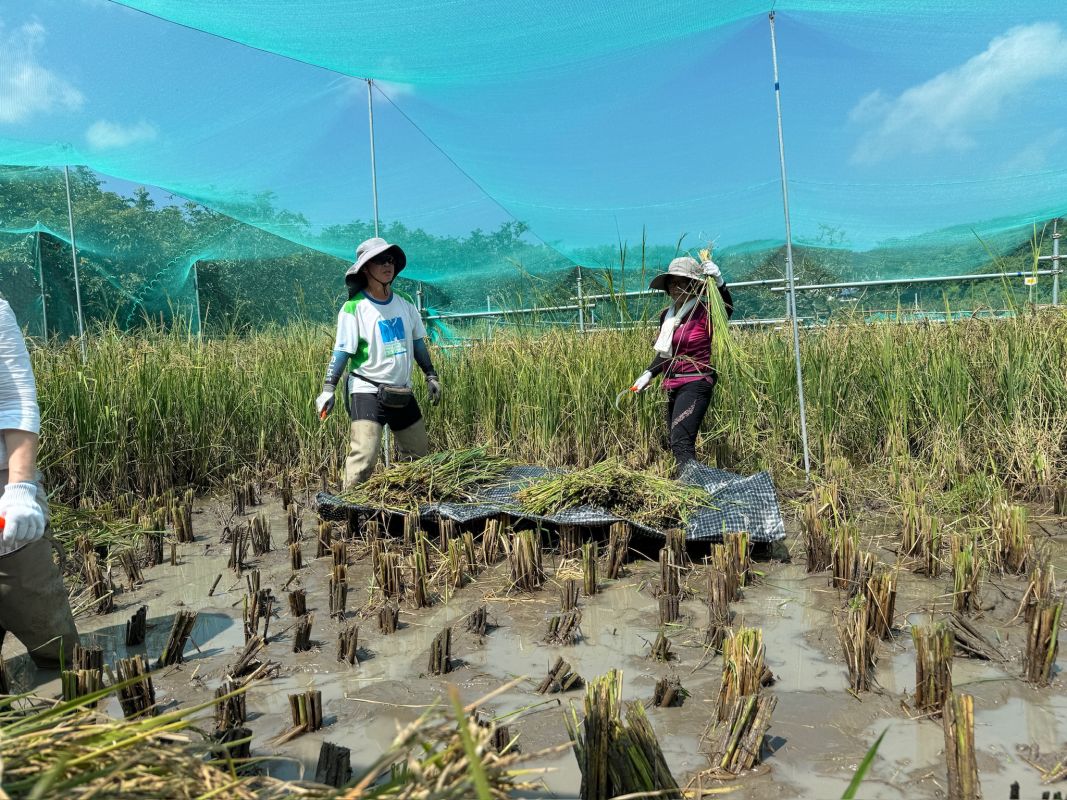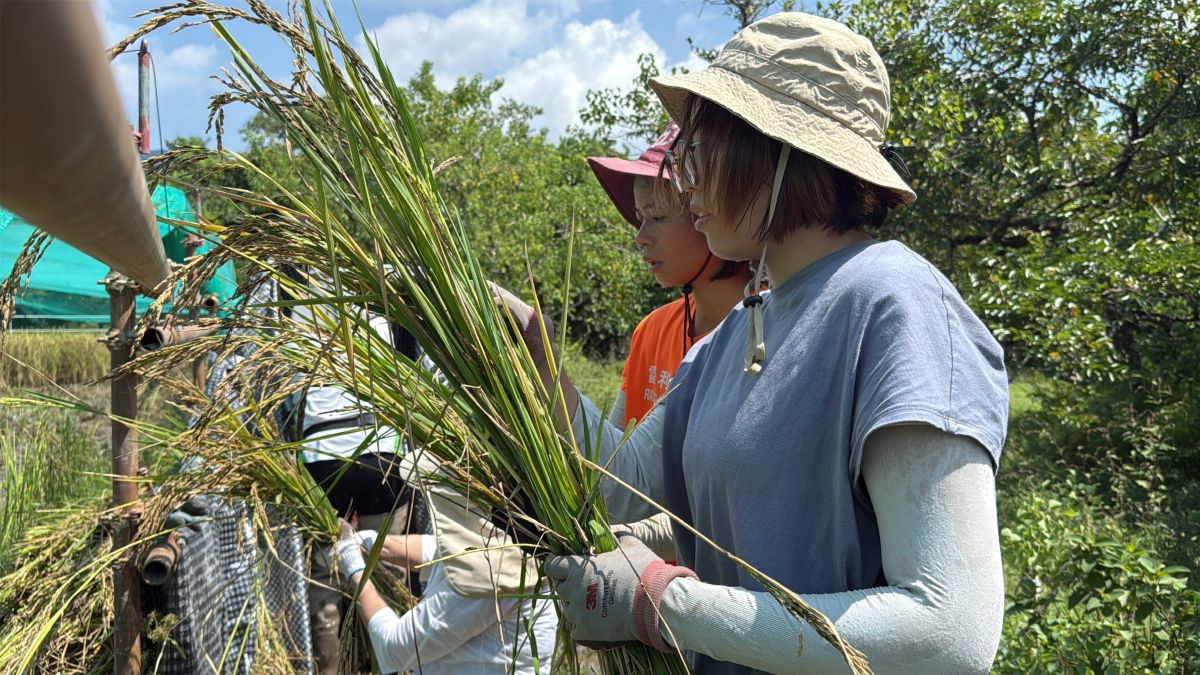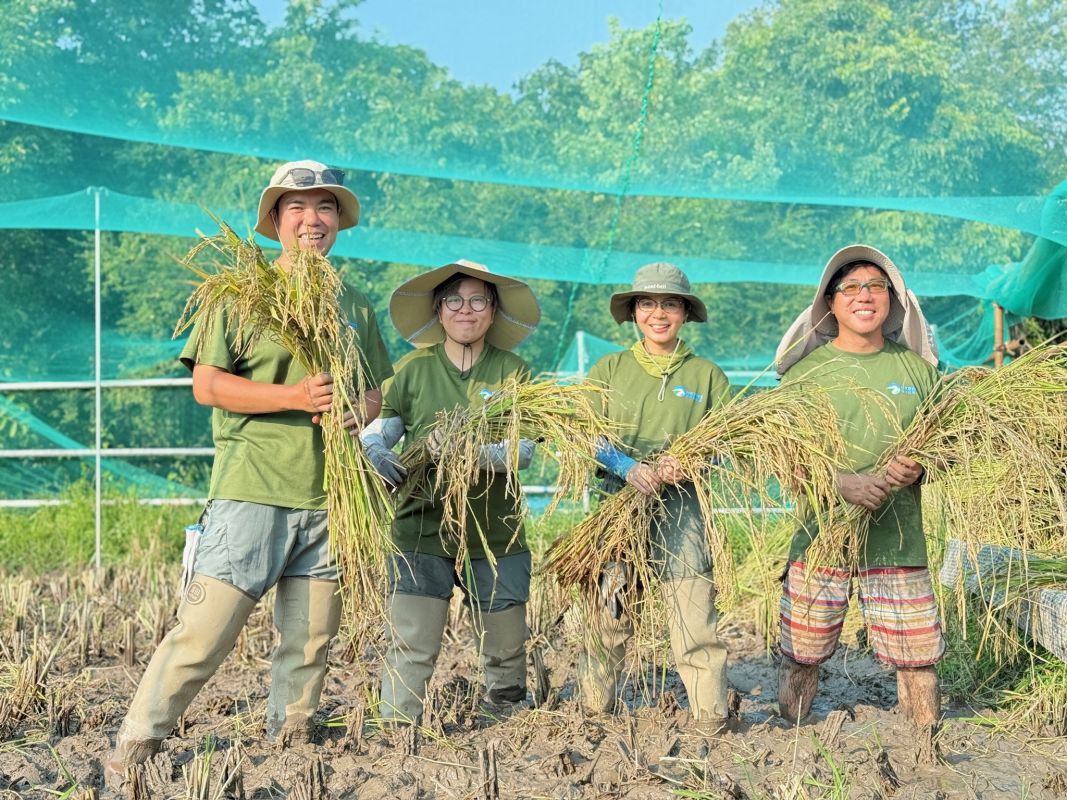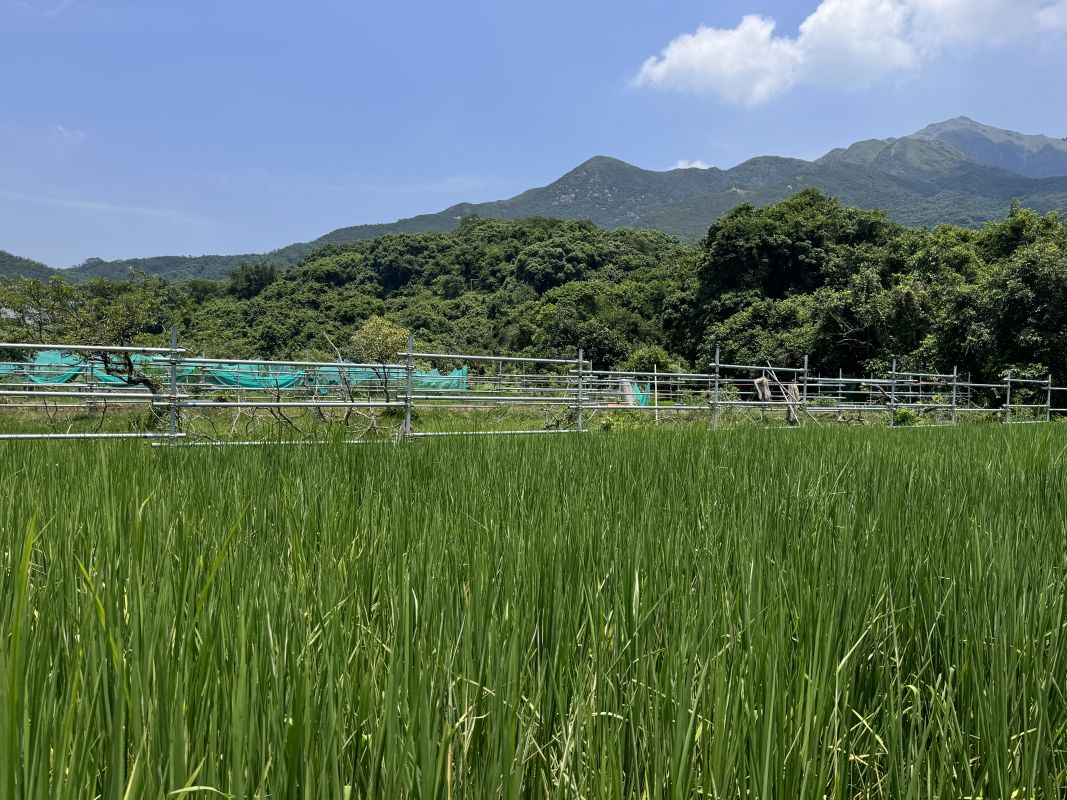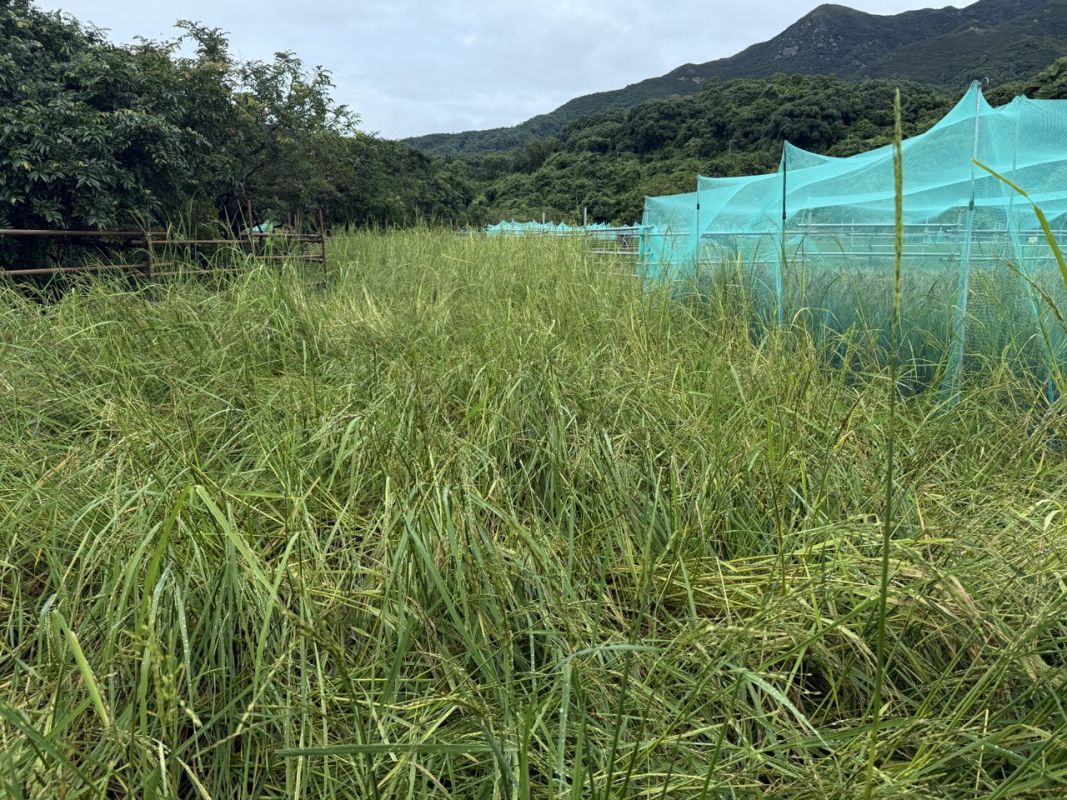秋風起,米田漸染黃,米香在空氣中流淌。
不少過境遷徙鳥兒也開始現身:
黃胸鵐、小鵐、灰紋鶲、鴝姬鶲、鐵嘴沙鴴...紛紛報到?
水口不只是稻田,還有豐富多樣的生境︰
沼澤、水田、水池、灌木、泥灘……每個角落都有驚喜!
今年秋天,讓我們乘著秋風,一起迎接遠道來的遷徙鳥兒!
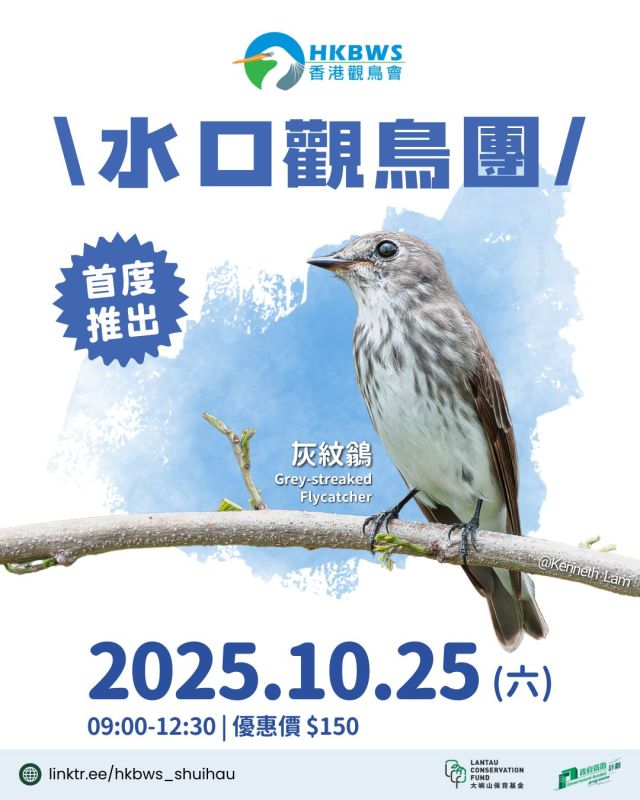
活動資訊
日期 |25/10/2025 (六)
活動時間 | 09:00 – 12:30
集合 | 09:00 水口村巴士站
解散 | 12:30 水口村巴士站
對象 | 10 歲或以上均可參與;16歲或以下需最少 1 位成人陪同
主要內容 | 水口生態導賞、教授觀鳥技巧
活動地點 | 水口濕地及泥灘
語言 | 廣東話為主
名額 | 15人
優惠價* | 每位 $150 (10-16 歲需至少 1 位成人陪同)
立即報名
報名連結 | https://forms.gle/mLqLzpuNG4Vdy5wh8
截止日期 |16/10/2025 (四) 5時正
*此計劃由 #大嶼山保育基金 資助 @ourlantau
活動注意事項:
- 參加者如有需要請自備︰小食、水、雨具、防蚊用品。
- 參加者建議穿著深色系長袖上衣及長褲。
- 活動內容圍繞鳥類保育及觀鳥技巧,為確保教學效果,暫不接受10歲以下幼童參加。
- 集合及解散地點與村民住宅接近,請盡量保持安靜。
- 鄉郊地方較多昆蟲及野生動物,尊重自然,請勿捕捉或傷害野生動物。
#香港觀鳥會 #HKBWS #大嶼山保育基金 #生態 #導賞團 #大嶼山 #水口


